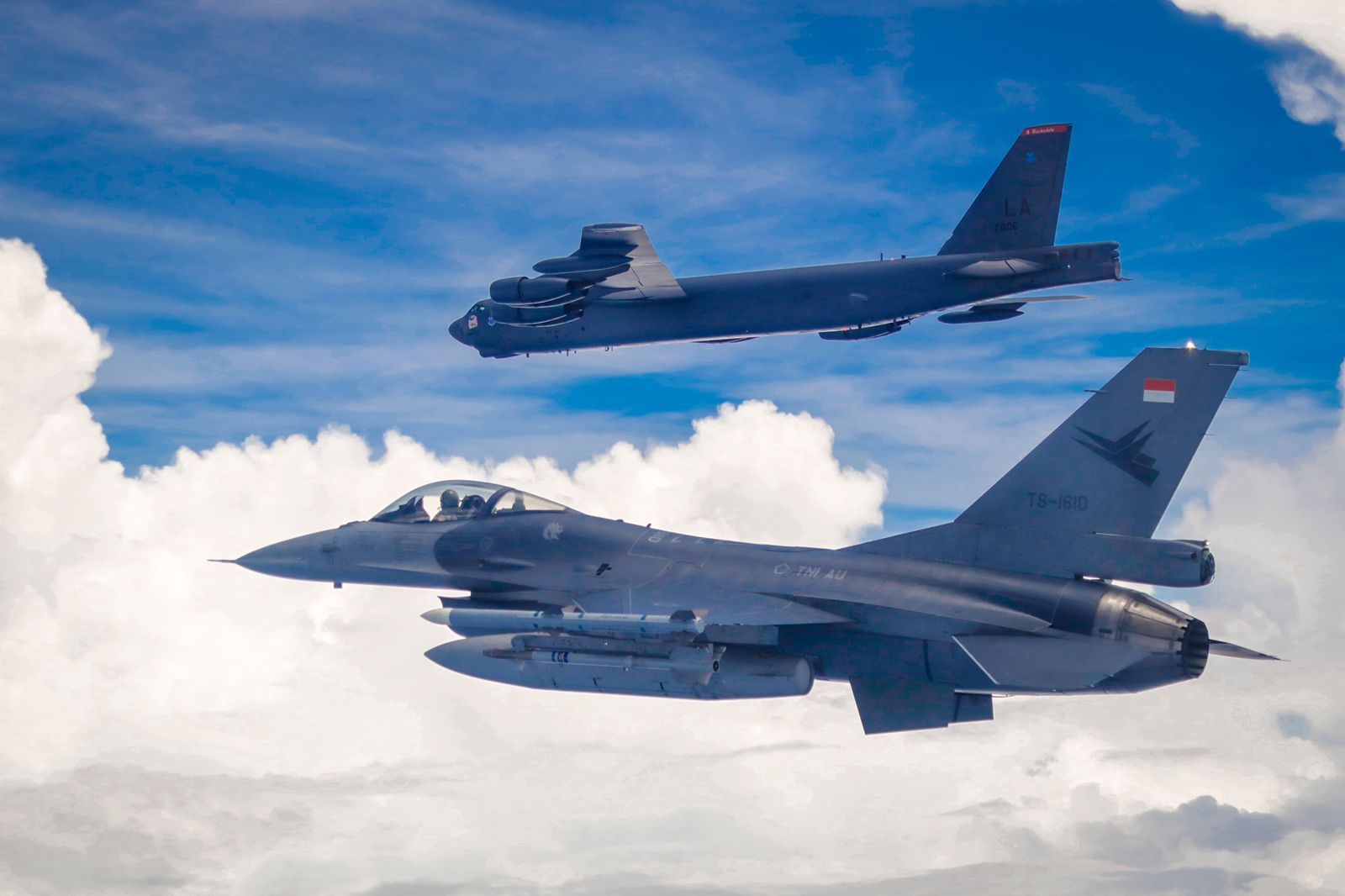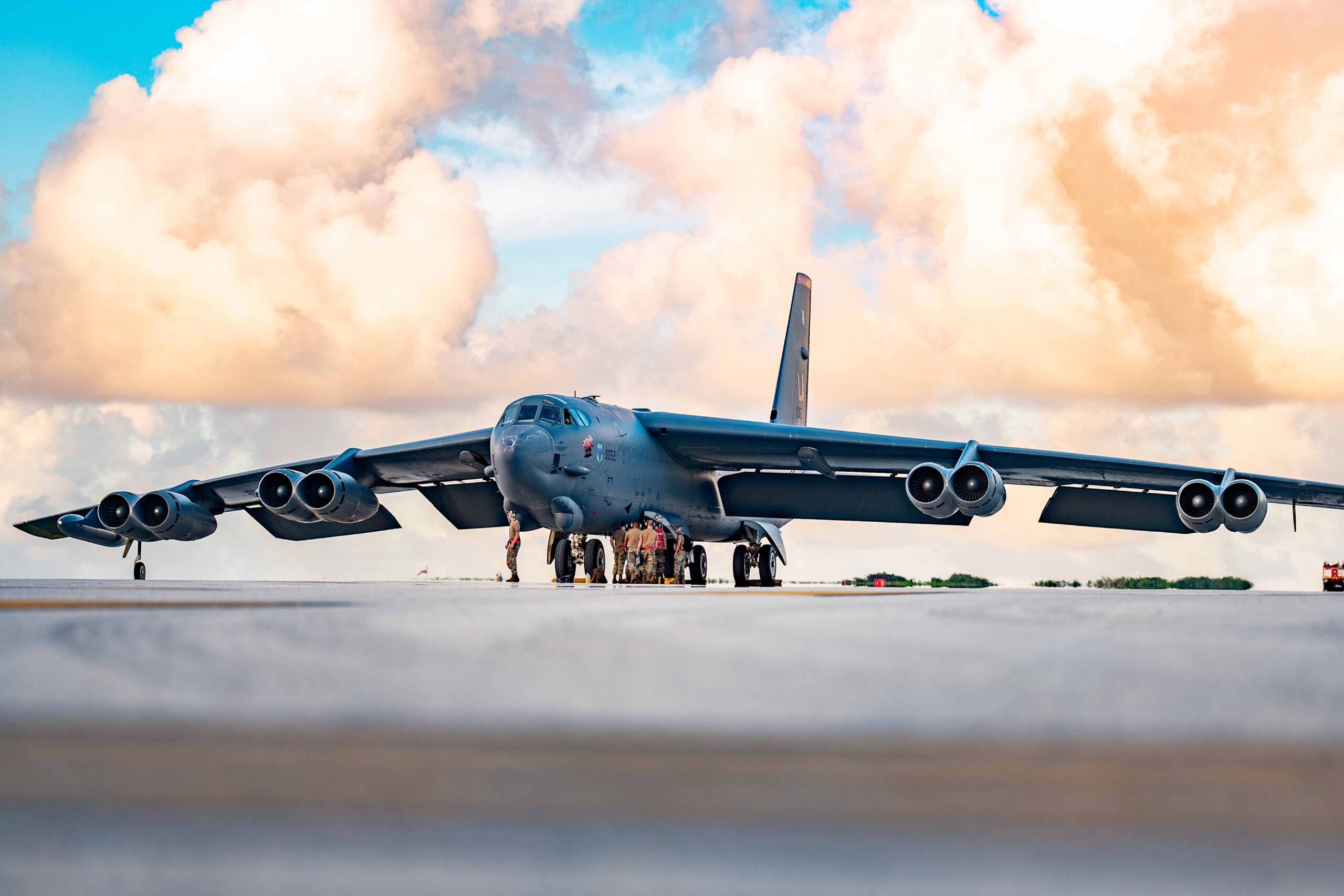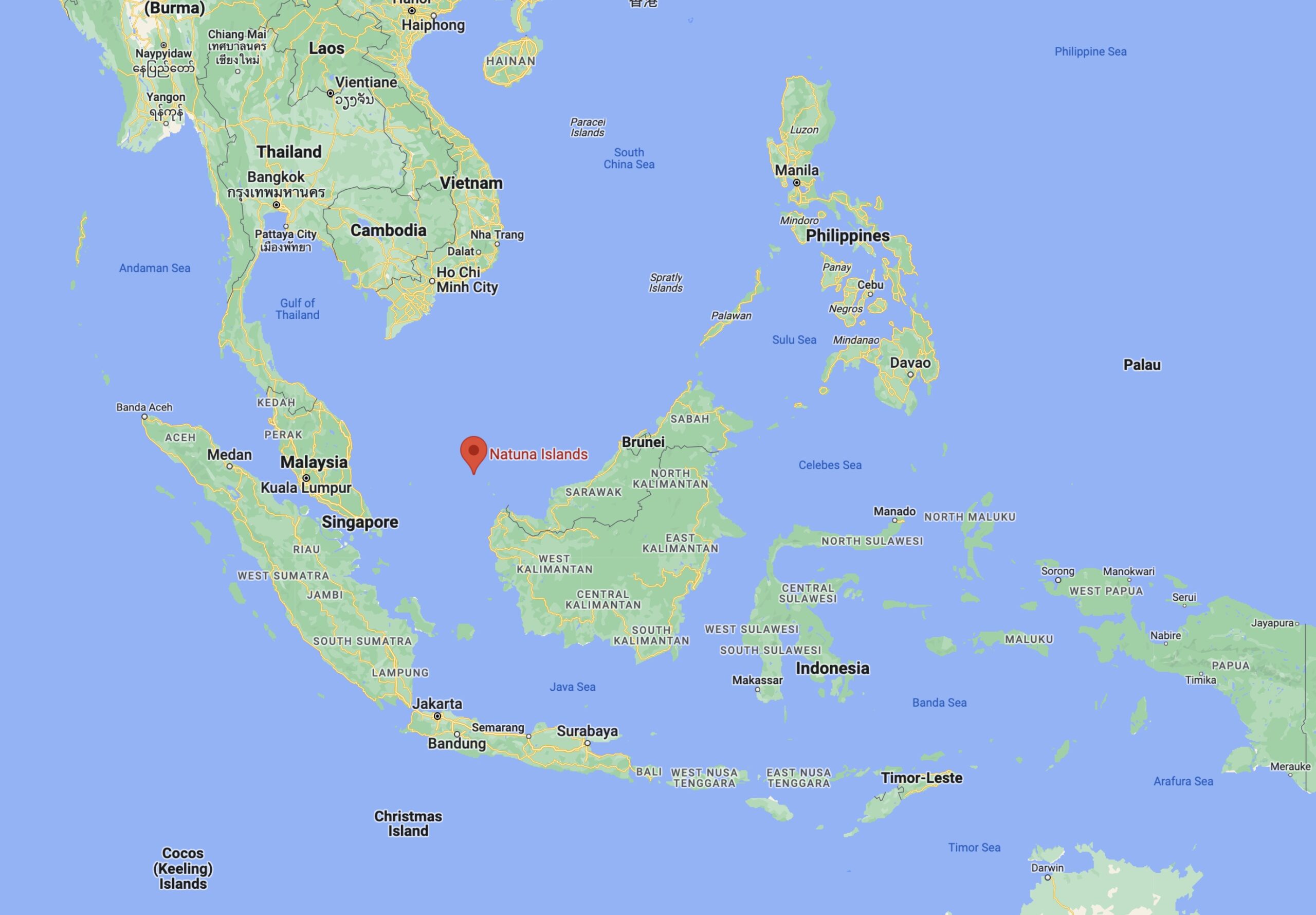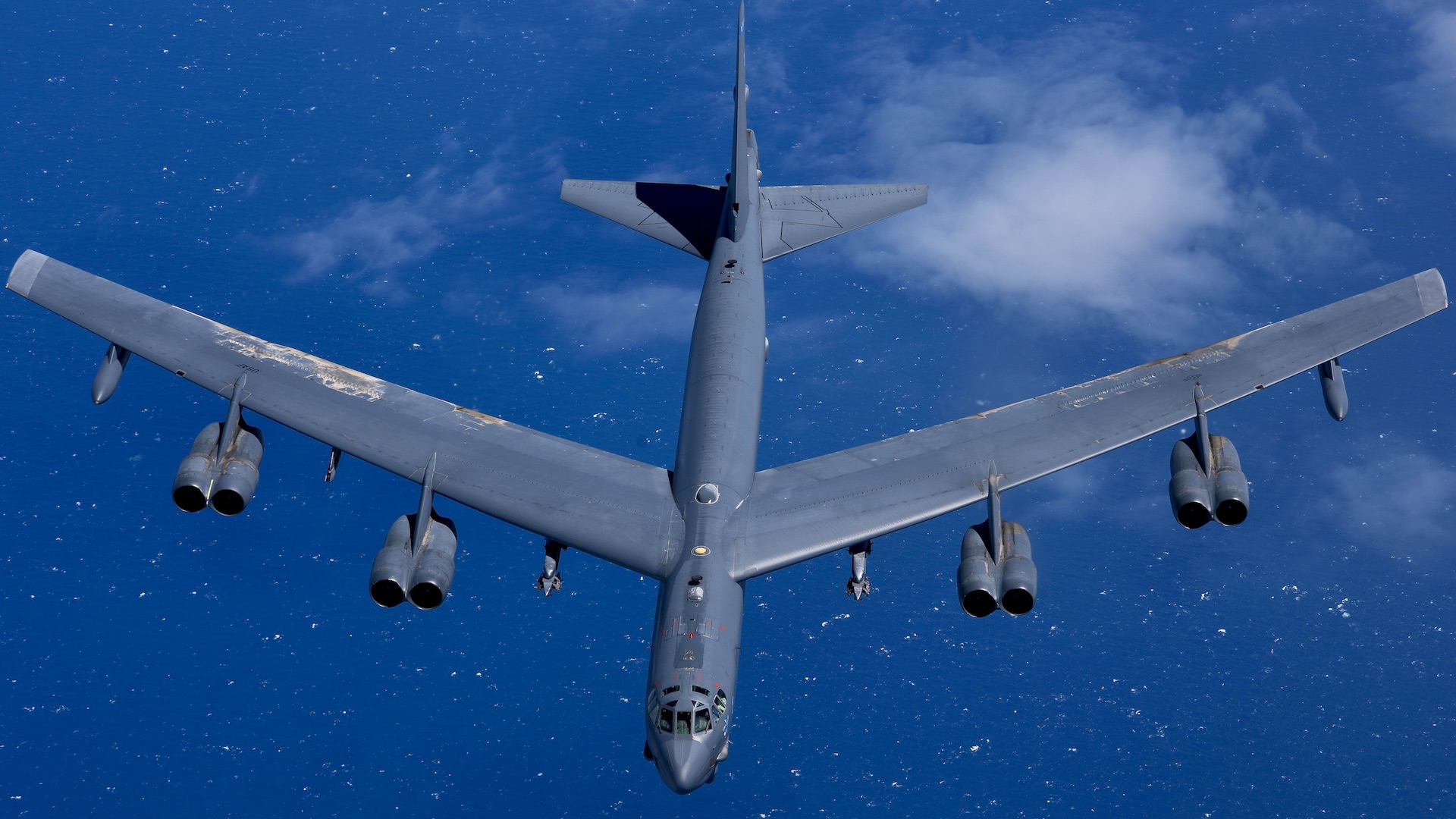Two U.S. Air Force B-52 Stratofortress bombers arrived in Indonesia yesterday, marking what appears to be the first deployment of that aircraft to the country. While specific details on the deployment remain limited at this time, the B-52s‘ arrival in Indonesia comes as the U.S. continues to engage partners in the Indo-Pacific amid concerns over a possible future conflict in the region involving China. The War Zone has reached out to Air Force Global Strike Command (AFGSC) and Pacific Air Forces (PAF) for further information on the deployment.
A number of open source intelligence (OSINT) accounts signaled yesterday that a B-52 had landed at Kualanamu International Airport, North Sumatra. According to the Twitter account @Jatosint , it was subsequently confirmed by the Indonesian Air Force that two B-52s had in fact landed at the airport after departing Andersen Air Force Base, Guam, and were welcomed by three Indonesian F-16s based out of Roesmin Nurjadin Air Force Base, Pekanbaru.
First introduced in the mid 1950s, the B-52 remains at the heart of the Air Force’s bomber fleet. B-52H bombers are expected to serve through 2050 after receiving a whole host of upgrades in the coming years. This includes being re-engined with F130 turbofans supplied by Rolls Royce. Eventually, the Air Force’s bomber force is expected to consist of the B-52 and the B-21 Raider stealth bomber, the latter of which is set to ultimately replace all of the service’s existing B-2 Spirit stealth bombers.
Photos and video taken from Kualanamu International Airport yesterday have been circulating online, a selection of which can be seen below. The two B-52s currently in Indonesia are home based at Minot Air Force Base, North Dakota.
There’s also been suggestion that the B-52s may be set to take part in Exercise Cope West 2023 – a bilateral training exercise currently ongoing at Roesmin Nurjadin AFB involving the U.S. Air Force and Indonesian Air Force. Cope West 2023 began on June 12, and is scheduled to last through June 23. Approximately 100 U.S. service members as well as six U.S. Air Force F-16s are involved in the exercise, alongside seven Indonesian Air Force aircraft.
The Minot B-52s currently deployed to Guam are fulfilling a Bomber Task Force (BTF) rotation in the Indo-Pacific. On June 12 and 14, four B-52s and more than 200 airmen assigned to the 23rd Bomb Squadron, Minot AFB, landed at Guam as part of a Bomber Task Force (BTF) deployment. BTF rotations see Air Force bombers deployed all over the globe, including to Guam, and typically last a month or more. They are designed to demonstrate the service’s high state of readiness and validate its strike capability, in line with the Agile Combat Employment (ACE) concepts of operation. Above all else, they provide a heavy hitting forward presence that often sees missions that skirt the borders of potentially adversary countries in the region.
“Being here in the Indo-Pacific with the Bomber Task Force allows our forces to showcase our ability to deploy anytime, anywhere in support of the combatant commander’s objectives,” U.S. Air Force Lt. Col. Ryan Loucks, BTF commander, said of the recent BTF deployment. “Training and operating in the priority theater allows us to demonstrate our continued readiness, willingness and commitment to our allies and partners.”
While the recent deployment of B-52s to Indonesia marks an important moment for both that country and the U.S. Air Force, it should be noted that B-52s have trained with Indonesian Air Force aircraft in the past. In September 2021, the very first BTF mission involving the Indonesian Air Force took place. During the mission, four Indonesian Air Force (TNI-AU) F-16s based at Iswahyudi Air Force Base, East Java, teamed up with two B-52s from Barksdale Air Force Base, Louisiana, over the Sulawesi Sea. The mission also constituted the first time a B-52 integrated with the Indonesian Air Force in flight, according to Pacific Air Forces.

More broadly, Air Force B-52s have had a notable presence in the Indo-Pacific as of late – with four B-52s assigned to the 2nd Bomb Wing at Barksdale Air Force Base, Louisiana, arriving at Guam on March 30 and leaving in late April for a BTF rotation. During that time, the B-52s completed 29 sorties and integrated with four allied partners, according to Air and Space Forces Magazine.

With that said, the specific deployment of B-52s to Indonesia comes as the U.S. looks to bolster interoperability with its allies in the Indo-Pacific amid heightened tensions in the region, particularly with regard to China.
Located at the southern end of the South China Sea, Indonesia has invested heavily in its defense capabilities in recent years owing to threats posed by China. Indeed, the country has had its share of maritime incidents with Chinese vessels over the past years and is currently working to establish a code of conduct (COC) with China for the South China Sea.
The South China Sea in particular represents an area where Beijing has aggressively asserted its claims to various disputed shoals. In fact, China claims nearly the entirety of this highly strategic body of water as its own.
As we have noted in the past, by artificially expanding some existing islands and building new ones, and establishing a permanent military presence, Beijing has sought to solidify its claims in the South China Sea – in conflict with those of other countries, including Indonesia. Indeed, Indonesia’s exclusive economic zone which surrounds the Natuna Islands partially overlaps with an area in the South China Sea claimed by Beijing.

Yet Indonesia represents something of a strategic imperative to both the U.S. and China. China has sought to woo Indonesia with high levels of investment as of late, with the country pouring $5 billion into Indonesia in the first nine months of 2022 compared to the U.S.’s $2 billion during the same period. For the U.S., having Indonesia as an engaged partner in the Indo-Pacific is perceived as vital should a conflict with China erupt. However, Indonesian officials have stressed that the country would remain neutral during a possible conflict involving the U.S. and China. This was underscored by the Indonesian Navy’s recent multilateral naval exercise involving both the U.S. and Chinese navies, which took place in early June.
Despite this, the B-52s’ deployment to Indonesia marks a significant moment for both that country and the U.S. Air Force, signaling increasing levels of military cooperation between Indonesia and the United States.
Update, 06/21/2023: Pacific Air Forces Public Affairs has confirmed that the B-52s currently in Indonesia will take part in Exercise Cope West, and will remain in the country until June 23.
Contact the author: oliver@thewarzone.com
